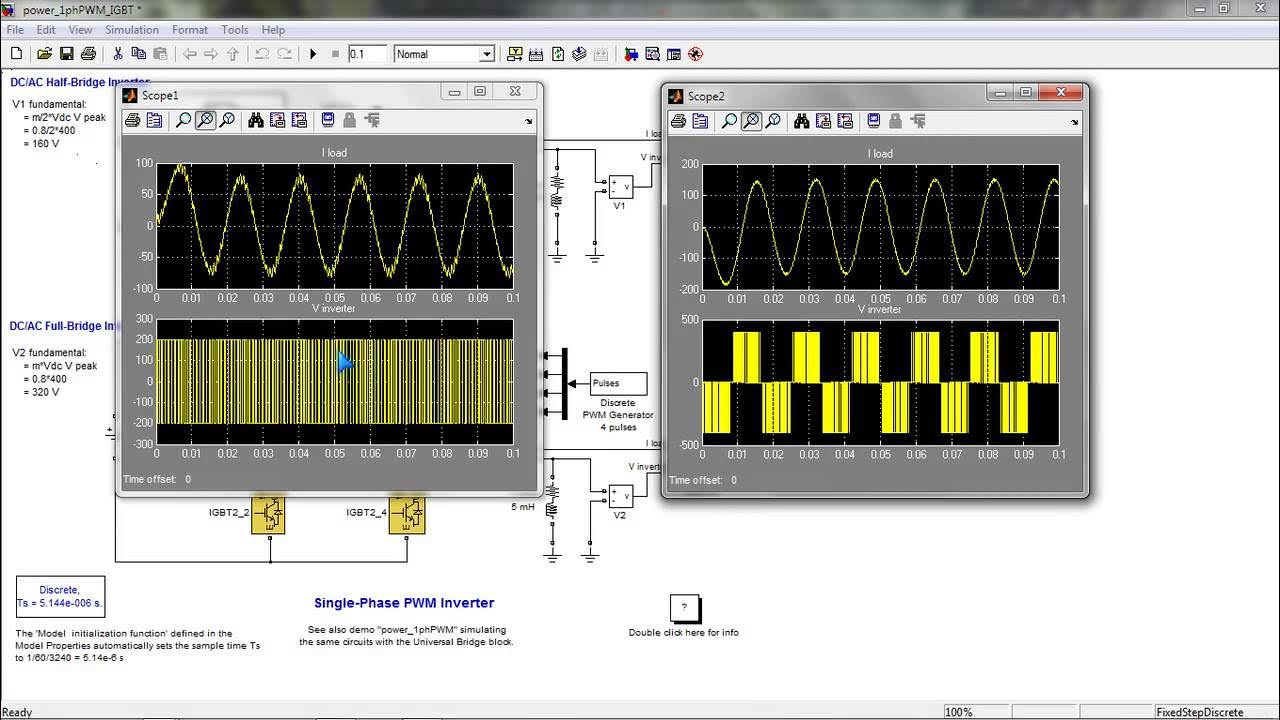Eletrônica de Potência 1: (A.10) Retificador Monofásico Não Controlado de Onda Completa - Carga RL
Summary
TLDRIn this lesson on the monophase uncontrolled full-wave rectifier with an RL load in a bridge configuration, the instructor explains the circuit's operation and analyzes current and voltage behavior in two stages. The video delves into the Fourier series expansion for voltage and current components, explaining how to calculate average and RMS currents, power absorption, and power factor. Two examples are provided, including detailed steps for calculating average current, power, and determining the necessary inductance to limit harmonics. The session concludes with a look ahead at the next lesson, where the study will be extended to a more complex RLE load.
Takeaways
- 😀 The class covers the analysis of a single-phase uncontrolled full-wave bridge rectifier with an RL load.
- 😀 The circuit under study involves a resistor and an inductor as the load, powered by a sinusoidal AC source with a maximum voltage of VM.
- 😀 The rectifier operates in two stages: one during the positive half-cycle (0 to pi) and another during the negative half-cycle (pi to 2pi) of the input AC voltage.
- 😀 In the first stage, diodes D1 and D2 conduct, while D3 and D4 are reverse biased, while in the second stage, diodes D3 and D4 conduct, and D1 and D2 are reverse biased.
- 😀 The output voltage waveform during the first stage matches the positive half of the input AC waveform, and during the second stage, it follows the negative half of the input AC waveform.
- 😀 The current through the load does not drop to zero, unlike in a half-wave rectifier, and the rectifier maintains continuous conduction.
- 😀 The voltage drops across the diodes are zero during the first stage for D1 and D2, and during the second stage for D3 and D4, which affects the current flow.
- 😀 The average and RMS values of the output voltage are calculated, with the average output voltage being 2 x VM / pi, and the RMS value of the output voltage being equal to the RMS value of the input AC voltage.
- 😀 To determine the average and RMS current in the load, Fourier series analysis is used to express the output voltage and current in terms of harmonics.
- 😀 The script provides worked-out examples of how to calculate the average current, the absorbed power, and the power factor in the circuit, along with how to limit harmonic distortion by adjusting the inductance of the load.
Q & A
What is the focus of this class in relation to power electronics?
-This class focuses on the analysis of a monophase uncontrolled full-wave rectifier with an RL load.
What is the basic structure of the circuit being analyzed?
-The circuit is a monophase full-wave rectifier with a bridge configuration, supplying an RL load consisting of a resistor and an inductor.
How does the circuit operate in the first stage (0 to π)?
-In the first stage, the positive half-cycle of the input voltage activates diodes D1 and D2, allowing current to flow through the load. Diodes D3 and D4 are reverse-biased and do not conduct.
How does the circuit operate in the second stage (π to 2π)?
-In the second stage, the negative half-cycle of the input voltage activates diodes D3 and D4, providing a current path through the load resistor and inductor, while diodes D1 and D2 are reverse-biased.
What is the key difference between the current behavior in a full-wave rectifier with an RL load compared to a purely resistive load?
-For an RL load, the current does not drop to zero, unlike in a purely resistive load, where current can go to zero during certain phases of operation.
What is the significance of the Fourier series in this analysis?
-The Fourier series helps in analyzing the waveform of the rectified output voltage, breaking it down into its harmonic components, which is essential for understanding the current behavior and calculating effective values.
How is the average value of the load current (I_out) calculated?
-The average value of the load current is calculated by dividing the average output voltage (V_avg) by the load resistance (R). The formula used is: I_out = (2 × V_max / π) / R.
How do the harmonic components of the current affect the overall current waveform?
-The harmonic components add complexity to the current waveform, and by calculating the amplitude of these harmonics, it is possible to determine the total effective current, which includes contributions from the fundamental frequency and higher-order harmonics.
What is the purpose of calculating the RMS (Root Mean Square) value of the current in this context?
-The RMS value of the current is calculated to determine the effective current, which is important for power calculations, ensuring that the power dissipated in the load can be accurately assessed.
How is the power dissipated in the RL load calculated?
-The power dissipated in the RL load is calculated by using the formula P = I_rms² × R, where I_rms is the RMS value of the current, and R is the load resistance.
Outlines

このセクションは有料ユーザー限定です。 アクセスするには、アップグレードをお願いします。
今すぐアップグレードMindmap

このセクションは有料ユーザー限定です。 アクセスするには、アップグレードをお願いします。
今すぐアップグレードKeywords

このセクションは有料ユーザー限定です。 アクセスするには、アップグレードをお願いします。
今すぐアップグレードHighlights

このセクションは有料ユーザー限定です。 アクセスするには、アップグレードをお願いします。
今すぐアップグレードTranscripts

このセクションは有料ユーザー限定です。 アクセスするには、アップグレードをお願いします。
今すぐアップグレード関連動画をさらに表示

Eletrônica de Potência 1: (A.07) Retificador Monofásico de Meia Onda - Carga RL e Diodo de Retorno

Eletrônica de Potência 1: (A.05) Retificador Monofásico Não Controlado de Meia Onda - Carga R

What is a rectifier?

Full Wave Rectifier - Conceptual Review | Basic Electronics

MODUL1 PENYEARAH 1PHASE (HALF WAVE DAN FULL WAVE) MENGGUNAKAN SIMULINK MATLAB

Inverter_simulink
5.0 / 5 (0 votes)
